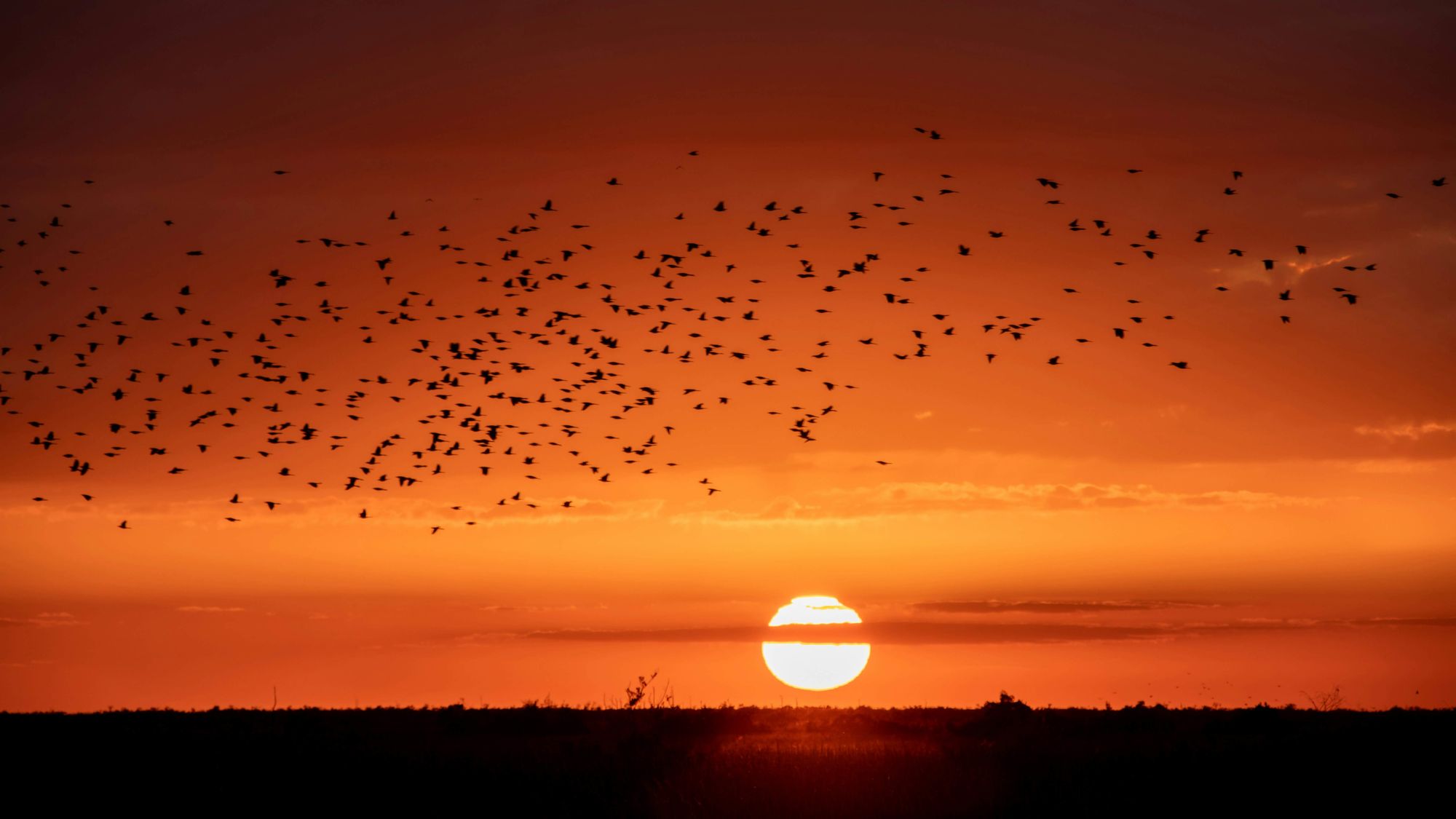Earth is often referred to as the water planet, being the only celestial body in our solar system with significant bodies of water. While traces of water have been detected on Mars, Europa, Enceladus, and Titan, it primarily exists as remnants of the past or in conditions where it's only present under certain circumstances.
But only 3% of Earth's water considered truly fresh, and a mere 0.014% deemed livable, freshwater ecosystems are both vital and delicate.
Within these habitats, 126,000 species thrive. However, the World Wide Fund for Nature's Living Planet Index has documented an alarming 83% decline in freshwater vertebrate populations from 1970 to 2014.
Given the diversity and scarcity of freshwater resources, it is imperative to educate people about these ecosystems and also how to conserve them.

What is freshwater?
Merriam-Webster defines freshwater as "water that is not salty." But how much salt qualifies as "not salty"? Freshwater refers to water with low concentrations of dissolved salts and other solids, typically less than 1,000 parts per million (ppm) of total dissolved solids (TDS).
Scientists studying freshwater habitats are known as Limnologists.
What is a freshwater habitat?
Rivers: Rivers begin their journey from various sources, such as springs or melting glaciers, and flow through diverse landscapes. Along the way, they transport sediments, nutrients, and living organisms downstream, shaping habitats and fostering ecological interactions.
Example: The Nile River
Lakes: Lakes are like big, busy ecosystems with lots of different plants and animals living in them. They have layers: a warm top layer called the epilimnion, a middle layer called the thermocline, and a cold bottom layer called the hypolimnion. These layers affect how nutrients and oxygen move around, as well as where different species live. Lakes are also important for how water moves in an area and for controlling the weather by making it rain or sunny.
Example Lake Baikal
Ponds: A pond is a small, shallow body of freshwater, typically with a surface area less than 2.25 hectares (5.6 acres) and a relatively uniform depth. It forms through various processes such as glacial activity, tectonic subsidence, or human excavation.
Example: Walden Pond
Streams: A stream is a narrow body of flowing freshwater, typically originating from springs or runoff and eventually merging with larger water bodies like rivers or lakes.
Example: Boulder Creek
Ditches: Ditches are man-made channels dug near roads, fields, or cities to control water. They come in different sizes and shapes and have various uses, like directing water away from flood-prone spots, preventing erosion, and helping farmers by managing soil moisture.
Example: the "aggers" on the Fosse Way
Wetlands: Wetlands: Wetlands are special places where water remains stationary throughout the year or only during specific periods. They come in different types, such as marshes, swamps, bogs, and floodplains, each with its own plants and soil. Wetlands are important because they clean water, prevent floods, store carbon, and provide homes for many plants and animals.
Example: The Everglades
Famous freshwater habitats
Everglades
The Everglades is the largest freshwater habitat in the world. It is a vast expanse of freshwater marshes in Florida that harbors rich biodiversity. It once covered an area of 4,000 square miles, but due to human development, its size has been reduced to less than half. The Everglades is home to more than 40 species of mammals and over 360 species of birds.

The Nile River
The Nile River is one of the world's longest rivers, stretching over 4,100 miles (6,650 kilometers) through northeastern Africa, making it the longest river in the world. It has two main tributaries, the White Nile and the Blue Nile, which converge in Sudan before flowing north through Egypt and emptying into the Mediterranean Sea.

Freshwater mammals
Beaver
Scientific name: Castor canadensis
Conservation status on the IUCN list: Least concern
Physical characteristics: Beavers have rotund bodies with brown fur, webbed hind feet for swimming, and long, flat tails. They have broad, flat heads with small ears and eyes. They also possess large, orange incisors adapted for gnawing through wood.
Collective noun: a colony of beavers
Example sentence: In the tranquil wilderness, a bustling colony of beavers diligently constructed their dam
Interesting fact: Beavers are also known as nature's engineers, as they have remarkable abilities to use natural resources such as mud and twigs to create dams and homes.

Platypus
Scientific name: Ornithorhynchus anatinus
Conservation status on the IUCN list: Near-threatened
The platypus has a a duck-like bill with electroreceptors, webbed feet for swimming, dense waterproof fur, and a flat tail for steering.
Collective noun: a paddle of platypus
Example sentence: The paddle of platypus gathered by the riverbank
Interesting fact: Platypus are one of the few mammals that lay eggs.

Capybara
Scientific name: Hydrochoerus hydrochaeris
Conservation status on the IUCN list: Least concern
Capybaras are large, semi-aquatic rodents native to South America. They have a barrel-shaped body covered in short, coarse fur that can range in color from reddish-brown to grayish-brown.
Their heads are somewhat rounded with small eyes, nostrils positioned high on the snout for easy breathing while swimming, and small ears.
Collective noun: a herd of capybara
Example sentence: As the sun began to set over the South American wetlands, a peaceful herd of capybaras grazed along the riverbank
Interesting fact: Capybaras are the largest living rodents on Earth.

Freshwater amphibians
Frog
Scientific name: Anura
Conservation status on the IUCN list: Dependent on species, but we know that 28% of the total species are threatened with extinction.
Frogs feature amphibian bodies with long hind legs and webbed feet for swimming and jumping. Bulging eyes atop their heads offer keen vision. Their moist, permeable skin aids in respiration. Most lack tails, and many boast camouflage patterns for protection.
Collective noun: an army of frogs
Example sentence: an army of frogs marched through the swamp, their croaks echoing in the still night air.
Interesting fact: Evidence suggests that frogs have inhabited the Earth for over 200 million years, a timeframe comparable to that of the dinosaurs.

Toad
Scientific name: Bufonidae
Conservation status on the IUCN list: Dependent on species
Toads feature stout bodies with dry, warty skin secreting toxins for defense. Their shorter hind legs are adapted for terrestrial movement. Bufonid in form, they possess distinctive triangular heads and glandular patches for communication and protection.
Collective noun: a knot of toads
Example sentence: In the damp evening, a knot of toads congregated near the pond.
Interesting fact: An interesting fact about toads is that many species possess specialized glands behind their eyes called "parotid glands." These glands can either secrete a toxic or an irritable substance.

Alligator
Scientific name: Alligatoridae
Conservation status on the IUCN list:
- American alligator: Least concern
- Chinese alligator: Critically endangered
Alligators are robust reptiles with armored skin, powerful jaws, and blunt snouts. Their dark olive-green or blackish-brown coloration camouflages them in freshwater habitats. Carnivorous and opportunistic, they prey on fish, mammals, and reptiles.
Collective noun: a congregation of alligators
Example sentence: A congregation of alligators basked lazily on the muddy banks of the river, enjoying the warmth of the afternoon sun.
Interesting fact: Alligators care for their young.

Freshwater fish
Goldfish
Scientific name: Carassius auratus
Conservation status on the IUCN list: Least concern
Goldfish are freshwater fish known for their bright colors and distinctive fins. They're popular pets and can grow up to 12 inches long. They were originally from East Asia.
Collective noun: a troubling of goldfish
Example sentence: I marveled at the shimmering troubling of goldfish darting gracefully through the water
Interesting fact: Goldfish can smell.

Koi
Scientific name: Cyprinus carpio
Conservation status on the IUCN list: N/A
Koi exhibit a range of colors, including white, black, red, yellow, blue, and cream, often in intricate patterns. Their bodies are streamlined with a prominent dorsal fin, and they possess long, flowing fins that add to their graceful appearance.
Collective noun: a school of koi
Example sentence: A school of koi glided gracefully through the tranquil pond.
Interesting fact: Koi can live up to 50 years or more.

Additional section: mythical creatures
In our mythical stories, monsters ravage the seas, while mysterious shapeshifters and creatures resembling prehistoric animals roam freshwater rivers and lakes.
Kelpies
Kelpies are shapeshifters, primarily appearing as black horses. Though they may seem docile, they lure people to ride them with the intention of drowning them.

Loch Ness Monster
The Loch Ness Monster is a sea creature that resides in Scotland's second-largest loch. Due to numerous sightings, it's one of the most well-known cryptids, affectionately called "Nessie." Interestingly, depictions of Nessie date back to ancient times, with local Native American stone carvings illustrating a similar sea creature. Many believe Nessie to be a plesiosaur, which is long thought to be extinct. While initially refuted due to the belief that plesiosaurs inhabited only seawater, new evidence suggests these dinosaurs could have lived in freshwater.

Non-native species
A species living outside its native habitat goes by various names: introduced, alien, exotic, adventive, immigrant, foreign, non-indigenous, or non-native. However, not all non-native species are harmful; harmful ones fall into a separate category called invasive non-native species. These organisms, introduced into ecosystems beyond their native range, negatively impact the ecosystem.
One of the most infamous examples of non-native invasive species is the cane toad. Introduced into Australia in the mid-20th century to control sugarcane pests, they spread rapidly. However, their toxic skin secretions led to the decline of native amphibian populations.
Aside from invasive non-native species, freshwater biome statistics highlight the urgent need to protect our freshwater.
- One-third of freshwater ecosystems have decreased since the 1970s, with 83% of the monitored freshwater populations declining.
- If water levels continue to decrease at current rates, 2.3 billion people will face a water crisis in the next 20 years.
These statistics underscore just a fraction of the issues stemming from water shortages. We must be mindful of our water usage. Moving forward, we'll share practical ways to reduce water consumption and help conserve our freshwater biomes.
How to conserve water?
We briefly summarized some tips that the United States Environmental Protection Agency provides to help you on your water conservation journey.
Save Indoors
- Fix the leak.
- Remember to turn off the tap when you are not using water.
- Take short showers instead of long baths.
- Use a dishwasher and make sure it is full before hitting the "start" button.
Save outdoors
Nearly 30% of household water in the US is used outside, such as in gardening.
- Create a water-smart landscape.
- Knowing the specificities of watering your plant will help you reduce water wastage.
- Reduce the use of sprinklers.
Conclusion
Freshwater animals play integral roles in maintaining the health and balance of aquatic ecosystems worldwide. From majestic fish to amphibians, these creatures contribute to nutrient cycling, water filtration, and habitat maintenance.
Protecting freshwater animals is crucial not only for their survival but also for the health of our planet's freshwater ecosystems. By implementing conservation measures, promoting sustainable practices, and raising awareness about the importance of freshwater biodiversity, we can ensure a brighter future for these vital and irreplaceable inhabitants of our rivers, lakes, and wetlands.
References
Start Saving Freshwater Habitat Freshwater Animal Freshwater Ecosystem Reversing the decline in freshwater biodiversity













